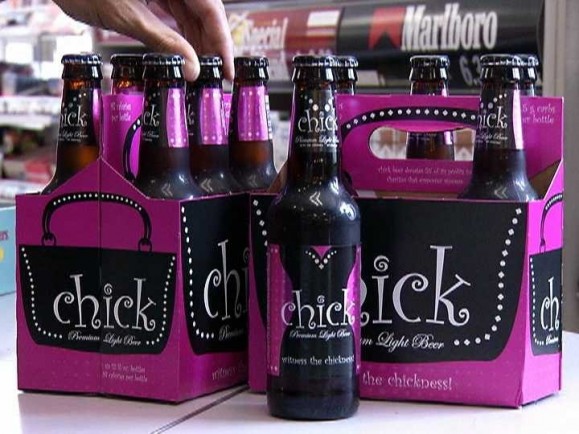According to marketing geniuses out there, women are little, itsy-bitsy, teeny-weeny, young girls. You would think that the blindingly obvious marketing stereotyping would be limited to the children’s toy section in toy stores. But oh no my darlings, oh no it’s not.
Just have a looksey at the color choice for the women’s (notice I say WOMEN, not little girls) birthday card section at Target:

And the men’s card section (Why so much smaller? Do men not celebrate birthdays?):

And the sports equipment for women:

Want women to buy your running shoes?

Want them to buy your tool set?

Your beer?

Your guns?

I’ve had friends respond to my rants about the color pink with such statements as, “but pink IS my favorite color!” And that’s fine, some people also like the color burnt orange, which I personally associate with highly acidic vomit, but hey, to each his own.
My issue here is that marketing folk obviously don’t understand or care to understand the consumers they’re targeting. If they did, they’d listen to numerous studies that have reported the opposite of what they seem to believe. Such as this one:
According to a 2003 study conducted by the University of Washington, women prefer the colors blue, purple, and green. Men preferred the colors blue, green, and black.
I’m sorry, but that must be wrong! I thought that when I was born I was genetically predisposed to loving the color pink! Now you’re telling me that most women prefer the color blue? To hell you say! Oh wait, blue is in fact my favorite color…how odd…
So why oh why have marketing companies been behaving this way for years, shoving pink down the throats of innocent girls and women for decades? Pure, unadulterated ignorance with a dash of sexism, that’s why. It hasn’t always been this way if you take a moment to learn you some history.
Journey with me waaaay back in time, where gender assigned clothing did not exist. Boys and girls wore white, lacy dresses up until the age of six. It was less about gender and more about practicality; white is easier to clean and bleach when babies ruin their clothing with constant peeing, pooping, and barfing.

It wasn’t until around the 19th century that pastels (pink and blue) were introduced. And to blow your mind even further, around 1918 pink was considered a color for boys because it was thought to be a “stronger and more passionate color, and because it’s actually derived from red”. Where blue was considered a girl’s color because it was a “much more delicate and dainty tone.”
So while the stereotypes still existed back then that boys were strong and girls were dainty (shoot me now), they believed the exact opposite of what we believe (as an almost biblical truth today) in regards to what were gender “appropriate” colors. It wasn’t until the 1940’s that the opinion started to change that pink was for girls and blue for boys. And who was behind that change? Marketing companies and manufacturers.
So what the hell point am I trying to make? Since you asked so politely, I’ll tell you. Believing that color choice/interest is gender specific is a load of bull pucky. If anything, we’ve discovered that men and women generally like the same colors (blue and green according to the study mentioned earlier), so there’s hardly any gender divide in color choice. In fact, I believe (and will eventually prove some day) that most “gender specific” behaviors are learned from environment and culture as opposed to being genetic or biological in any freaking way.
My other goal is to expose the fact that commonly held beliefs always change, so please don’t base your opinion on “what the majority of the population” thinks. Please don’t make your son ashamed if he wants a pink shirt or tell your little girl she’s not a “lady” if she wants to wear blue. Tomorrow, those commonly held opinions will be entirely different. But the shame your children feel from your judgements will take decades to undo.
Finally, I’d like to wag my finger in disappointment towards the marketing companies for so blatantly stereotyping women and men from the time they’re babies until adulthood, purposely dividing and pitting us against each other just to make more money. Evil jerkface bastards.
And please watch this highly entertaining, funny, and informative video on the sinister reasons behind gender targeting in marketing. Seriously, it’s so, so, so good.












